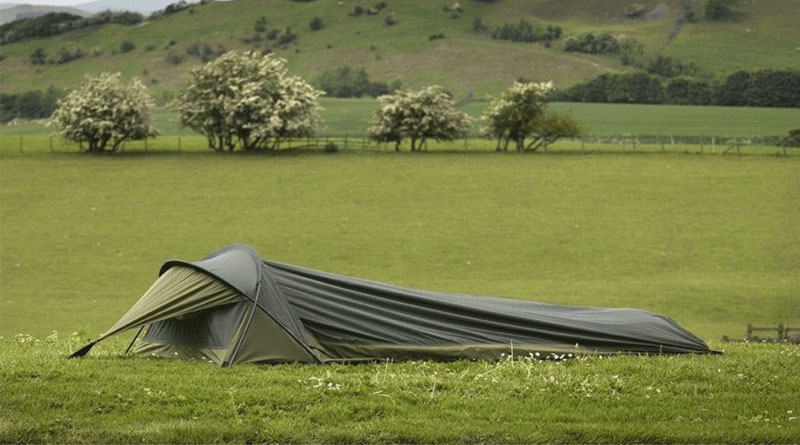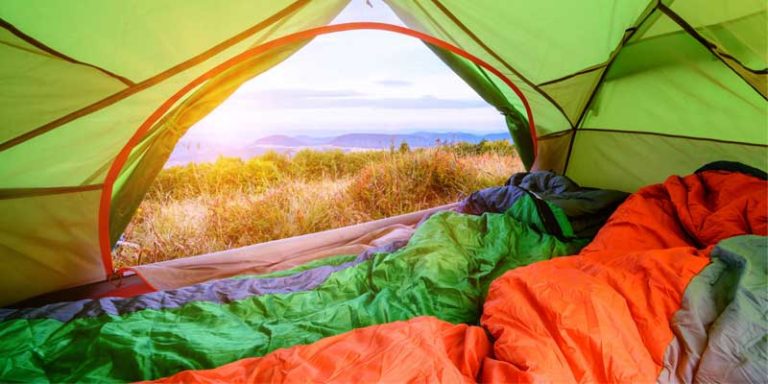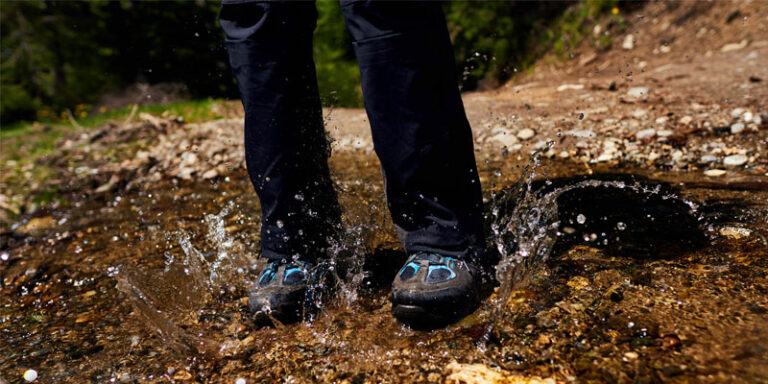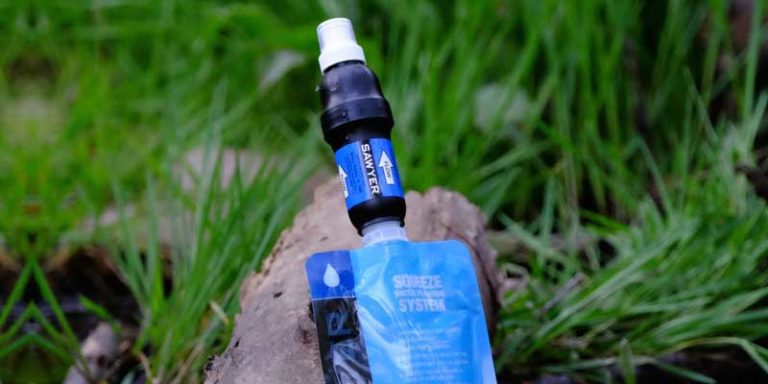Looking for a reliable one-person tent for your outdoor adventures? The Snugpak Stratosphere stands out as a spacious option among bivy sacks, offering ample room around the head and shoulders. During our testing, it proved resilient against light to moderate rain showers, although prolonged storms posed a challenge. Weighing 38.8 ounces and packing down to 6 inches by 12 inches, it’s on the heavier and bulkier side. However, its lack of breathability is a notable downside. Despite a well-ventilated canopy, when fully zipped, the interior quickly becomes stifling and humid due to insufficient airflow. Considering its premium price tag, the Stratosphere’s performance left us wanting more.
Highlights

Weight: 38.6 ounces (2 pounds, 6.6 ounces)
Packed Size: Approximately 6 inches by 12 inches
Material: Nylon with polyurethane coating
Ventilation: Mesh opening and zippered vents with Velcro closures
Capacity: One person
See the Snugpak Stratosphere 1
Weather Resistance
When we tested the Snugpak Stratosphere in different weather conditions, we found that it was better suited for colder and drier climates. It could handle light to moderate rain showers fairly well, but when faced with heavier rains, water managed to seep through the nylon fabric, leaving us feeling damp and uncomfortable inside the bivy sack. This meant that during prolonged or intense rain, the Stratosphere didn’t offer the protection we needed to stay dry.
One positive aspect of the Stratosphere’s design is its spacious canopy, which can be staked out to provide some shelter over the head and shoulders. This helped to keep most of the precipitation off these areas, offering some relief during rainy spells. However, the issue lay in the material itself, which lacked sufficient waterproofing to prevent water from penetrating during heavy rain events.
Weight
When we talk about the weight of the Snugpak Stratosphere, it’s important to know that it’s one of the heaviest bivy sacks we’ve tested. At 38.6 ounces (which equals about 2 pounds and 6.6 ounces), it’s almost as heavy as some of the lightest two-person tents available today. Most people choose bivy sacks because they want to save weight and space in their backpacks, but the Stratosphere doesn’t quite hit the mark in this regard.
While it’s still lighter than most tents, there are many other bivy sacks out there that offer much more significant weight savings. So, if weight is a critical factor for you when choosing gear for your outdoor adventures, it’s worth considering whether the Stratosphere’s weight is worth it compared to other options available on the market.
Comfort
One of the things we liked about the Snugpak Stratosphere is how easy it is to get into and out of. It’s designed with a roomy area around the head and shoulders, which makes it more comfortable compared to some other bivy sacks we’ve tested. Throughout the length of the bivy, there’s plenty of space to move around, allowing you to sleep on your side and wiggle your toes without feeling cramped.
However, comfort became an issue when we fully zipped the Stratosphere closed. Doing so created an uncomfortable environment inside, quickly becoming too hot and stuffy. This made us feel like we were in a sweat lodge, which isn’t ideal for a comfortable night’s sleep outdoors. So, while the Stratosphere offers ample room for movement, its lack of ventilation can make it uncomfortable in warmer conditions or when fully enclosed.
Ventilation
When it comes to ventilation, the Snugpak Stratosphere has its ups and downs. With the zipper open in colder temperatures, there’s adequate airflow to keep you comfortable inside. However, things start to feel stuffy and hot quickly when the zipper is closed, particularly in warmer weather. Even though there’s a mesh opening in the canopy, the lack of breathability in the material can make it feel claustrophobic and uncomfortable.
To improve ventilation, the Stratosphere offers a long zippered opening with Velcro closures. While this allows for some airflow control, we found it to be a bit finicky and prone to letting moisture in. Ultimately, the ventilation system doesn’t quite meet the mark, and the bivy sack struggles to maintain a comfortable internal environment, especially when fully zipped up. So, if ventilation is important to you for a good night’s sleep outdoors, you might want to consider other options with better airflow.
Packed Size
Despite being on the heavier side, one thing that surprised us about the Snugpak Stratosphere is how compact it packs down. Its poles collapse down quite short, and the stuff sack is just big enough to fit a rolled-up bivy into. Additionally, a couple of compression straps help minimize its size even further. This means that even though it’s a bit bulky, the Stratosphere can still fit snugly into your backpack without taking up too much space.
However, it’s worth noting that there are other options available that pack down even smaller than the Stratosphere. So, while it may not be the most compact bivy sack out there, it still offers a reasonable compromise between size and weight. Ultimately, if you’re willing to sacrifice a bit of space in your pack for the Stratosphere’s other features, its packed size shouldn’t be a deal-breaker.
Value
Considering its price tag, the Snugpak Stratosphere’s value proposition may leave something to be desired. While it offers some features like spaciousness and weather resistance, its overall performance doesn’t quite justify the high cost. For a bivy sack in this price range, you’d expect it to excel in areas like breathability, lightweight design, and reliable waterproofing.
However, the Stratosphere falls short in these aspects, making it difficult to justify its premium price. If you’re investing in outdoor gear, you want something that delivers on performance and durability for the money spent. Unfortunately, the Stratosphere may not offer the best bang for your buck compared to other options available on the market.
What I like about this tent
- Spacious Design: The Snugpak Stratosphere provides ample room around the head and shoulders, allowing for comfortable movement inside the bivy sack.
- Weather Resistance: While it may struggle in heavy rains, the Stratosphere performs well in light to moderate rain showers and offers protection from the elements in colder, drier climates.
- Ease of Entry and Exit: Getting in and out of the Stratosphere is straightforward, making it convenient for outdoor enthusiasts, especially during nighttime or inclement weather.
- Packed Size: Despite its weight, the Stratosphere packs down relatively small, making it suitable for backpackers looking to save space in their packs.
What I don’t like about this tent
- Breathability: Perhaps its most significant drawback, the Stratosphere lacks adequate breathability, leading to discomfort and condensation buildup, especially when fully zipped up.
- Weight: Compared to other bivy sacks on the market, the Stratosphere is relatively heavy, compromising its suitability for ultralight backpacking or extended trips where weight is a critical factor.
- Ventilation Issues: While it offers ventilation options, such as a mesh opening and Velcro closures, the ventilation system is finicky and may not effectively combat stuffiness and heat buildup inside the bivy sack.
- Value for Money: Considering its high cost and performance shortcomings, the Stratosphere may not offer the best value compared to other bivy sacks available at similar or lower price points.
Final Verdict
The Snugpak Stratosphere offers a spacious design and decent weather resistance, making it suitable for outdoor adventures in certain conditions. However, its significant drawbacks, such as poor breathability, weight, and ventilation issues, detract from its overall performance and value. While it may suffice for occasional use in colder, drier climates, it falls short of expectations for its price range. Ultimately, if you prioritize comfort, breathability, and lightweight design in your outdoor gear, there are better options available on the market that offer superior performance and value for your investment.



